April 15, 2012 is the 100th anniversary of the sinking of the Titanic.
This past Saturday, Joe Edgette, who has been studying the Titanic and its passengers for many years, and is also expert on all things cemetery, led a tour of Green-Wood’s Titanic-related sites. Our trolley and caboose were full–this tour sold out weeks ago.
Green-Wood has both Titanic survivors and those who perished in the disaster. Little (Robert) Douglas Spedden, six years old, managed to survive with his parents and nurse, clinging to his beloved bear, “Polar,” a purchase from the toy store of all toy stores, F.A.O. Schwarz (who is himself interred at Green-Wood). Douglas’s mother, Margaretta Corning Spedden, who is also interred up on Battle Hill with him, wrote and illustrated a book about his beloved bear and presented it to Douglas as a gift on Christmas Day, 1913. It recently has been published by Leighton Coleman III, who found it in his family’s papers. Several months ago, Leighton came on one of my tours, showed me Douglas’s grave, and sent me a copy of the book. For Leighton’s introduction to the book click here. Douglas met a sad ending; in 1915, still but nine years old, he ran into the street after a tennis ball near his family’s Maine estate and was hit by a car. He died, the first fatality from an automobile accident in the history of that state.
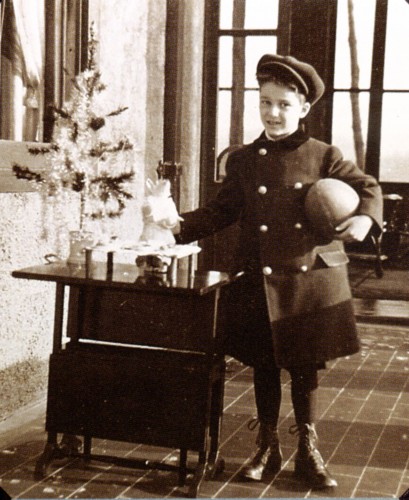
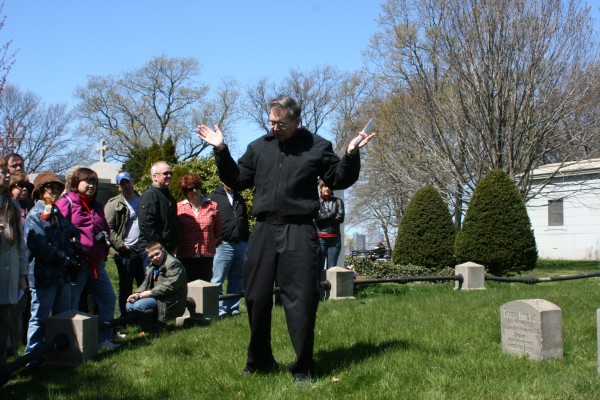
We also visited the Harder Mausoleum. Sidney Whalen, whose mother was the sister of George Harder, a Titanic survivor, generously opened it up for all on the tour to visit.
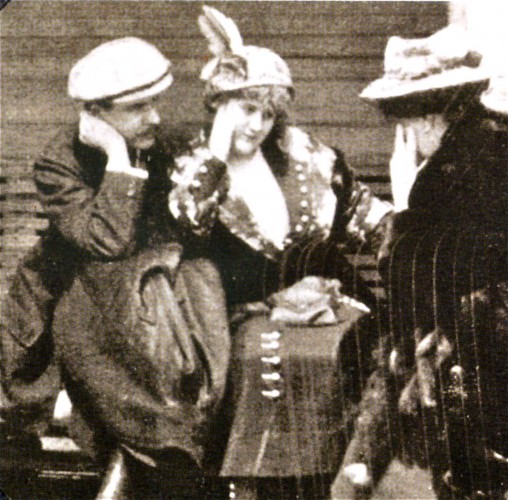
Sidney also read from his uncle’s Senate testimony about what he had witnessed and told about the nightmares George had for the rest of his life as a result of what he had seen and done to survive.
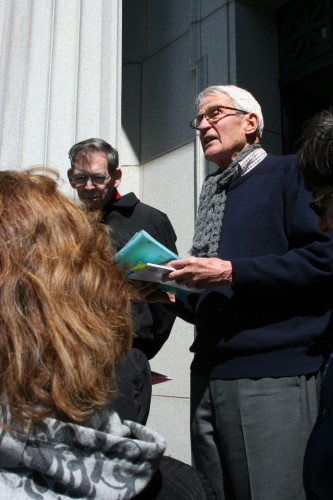
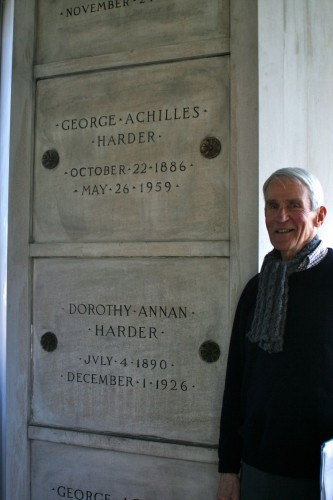
As I was preparing for this tour, I received an e-mail from Fold3, an online National Archives database that I subscribe to. It wrote about the Titanic and included links to World War II registration cards for four of the Titanic survivors. One of them was for George Harder; here’s his registration card, dated April 27, 1942 (just over 30 years after the Titanic’s sinking) on its back.
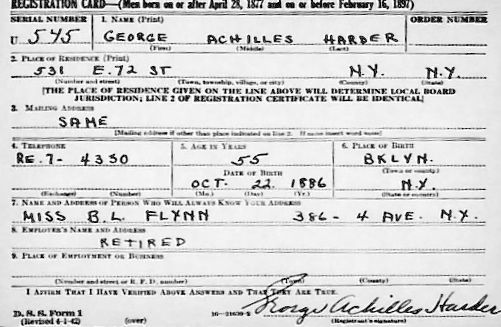
Wyckoff Van Derhoef lived at 109 Joralemon Street in Brooklyn Heights, just west of its intersection with Henry Street. He was the secretary of the Williamsburg City Fire Insurance Company. Vanderhoef was lost on the Titanic. But four days after its sinking, when his fate still was unclear, a reporter for the Brooklyn Daily Times contacted the president of Williamsburg City, asking for comment; it was reported that the president was “still holding out hope that Mr. Von Derhoef (sic) is alive; that he may have been picked up by another steamer and that he may eventually turn up.” But that was not to be; Wyckoff Van Derhoef’s body was pulled from the sea and his remains were interred at Green-Wood on May 3, 18 days after he had died.

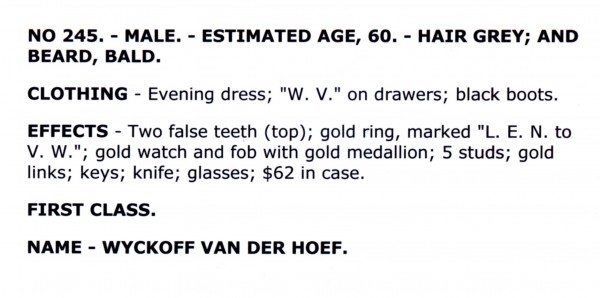
We also visited the cenotaph (a cemetery monument for someone whose body is not present there) memorializing William Augustus Spencer, a wealthy New Yorker (part of the Spencer family that intermarried with the fabulously-wealthy Lorillards of tobacco fame and fortune) who died when the Titanic went down, “Where Manhood Perished Not.”
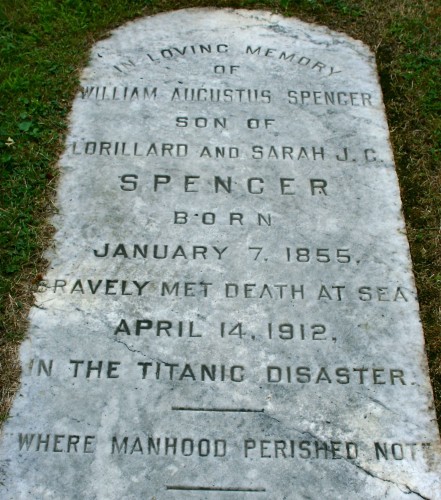
Note that that last line on this stone, “Where Manhood Perished Not,” is in quotations. That is a reference to the poem of that title, written in 1912 by Harvey P. Thew, which reads:
Where cross the lines of forty north and fifty-fourteen west,
there rolls a wild and greedy sea with death upon its crest.
No stone or wreath from human hands will ever mark the spot.
Where fifteen hundred men went down, but Manhood perished not.
Old Ocean takes but little heed of human tears or woe.
No shafts adorn the ocean graves, nor weeping willows grow.
Nor is there need of marble slab to keep in mind the spot.
Where noble men went down to death, but manhood perished not!
Those men who looked on death and smiled, and trod the crumbling deck.
Have saved much more than precious lives from out that awful wreck.
Though countless joys and hopes and fears were shattered at a breath,
Tis something that the name of Man did not go down to death.
Tis not an easy thing to die, e’en in the open air.
Twelve hundred miles from home and friends in a shroud of black despair.
A wreath to crown the brow of man and hide a former blot
Will ever blossom o’er the waves where Manhood perished not.
Titanic still stirs the imagination. Latest technical news is that the cast iron rivets and the repairs made before she sailed were not the cause of the sinking. The iceburg impact was catastrophic.
The search page shows the locations of the Speddens and George Harder but doesn’t respond to any combination of Wyckoff Van Der Hoef or William Augustus Spencer. Anybody know their sites?
Wyckoff Van Der Hoef’s grave is along Cypress Avenue. If you go to Border Avenue in section 137, then turn onto Cypress (one way here) and proceed past Hillside Mausoleum, you should see his gravestone just past the end of those buildings. It is visible from the road on the left hand side–at about where sections 138 and 141 meet. It is a low gray granite stone which notes that he died on the Titanic. William Augustus Spencer is interred near the intersection of Sylvan and Spruce Avenues. At that intersection you will see, up on the hill, what is known on the grounds as “The Spencer Pencil.” It isn’t a pencil, but it does look like one. Walk up to it–you will see his cenotaph flush with the grass, on the side of the “pencil” away from the roads. Have fun!
A Titanic enthusiast from the age of 9 7 a member of the Historical Society, I am always amazed to come across new information, especially about the lives before & after the disaster. Douglas Spedden is the saddest, dieing so tragically young so soon after surviving the sinking. Greenwood Cemetary contains the final resting places of so many famous people & to know that a few are Titanic survivors creates the need to visit the cemetary. FYI the ever famous Margaret “Unsinkable Molly” Brown, is buried only a drive away from Greenwood in Westbury Long Island at Holy Rood Cemetary when she was a resident of Denver, Colorado. Great information that I will store in my book of trivia. Thank you
I have been researching Titanic passengers and crew members burial locations since 1998 and was very happy to read this article! As Dave Gardner wrote, couldn’t find Wyckoff Van Der Hoef or William Augustus Spencer’s info on the search. However, would anybody know where (section and lot numbers) is located Fridtjof Arne Madsen (later changed his name to Fred Matson)? Born on March 17, 1888 and died January 23, 1972. Wife Louise (née Stokke) died in December 1980. Can’t find him or her on the search. Thank you!
Glad to be of help!
Fred Matson died January 23, 1972. His body was cremated here at Green-Wood but apparently his cremated remains were not interred here. Louise Matson, his wife, died on December 10, 1980. Her body was cremated at Green-Wood but again we have no record of her cremated remains being interred here.
Just a matter of interested if Mr Wyckoff Van der Hoef was the first paying passenger on the Titanic from Belfast to Southampton. White Star was breaking the law! As all passenger ships must have a safety Certificate issued by the Board of Trade beforehand. That Certificate was given at Southampton! May be a bit late for a lawsuit case now!
Mike.
This article perpetuates the myth that Douglas Spedden was the first auto fatality in the State of Maine. There had been dozens by 1915, as reported in their newspapers.
Also, the woman in the photo with George and Dorothy Harder is not Clara Hays, but Sallie Beckwith, the mother of a friend of theirs.